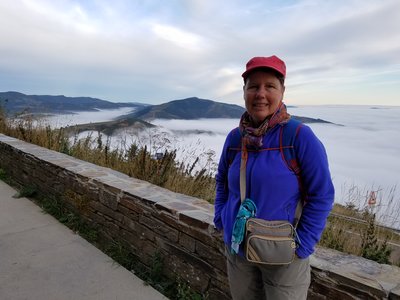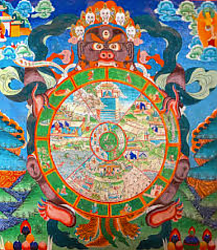Training the Mind on the Camino de Santiago
Going on a “spiritual” pilgrimage is a tricky thing – just that label loads the trip with expectation. It’s kind of like going on retreat with a shopping list of the experiences I’d like to have; how I’d like to be different and better when I come home.
The Camino de Santiago is a walking path across northern Spain, through vast empty landscapes, tiny villages and agricultural communities, cities both ancient and modern. There are stops in churches and cathedrals, convents and monasteries. It is a journey through space, but also, it seems, through time – to a time when the bones of a saint could inspire thousands of people to risk their lives walking across Medieval Europe to visit these relics, and thousands more to build lasting religious institutions to minister to these pilgrims. What spiritual treasure remains for this modern pilgrim?
It turns out that the Camino was a perfect environment to watch my mind’s attempts to nail down my experience, to hold on to pleasant sensations, to avoid pain, to gain territory, to control my environment, to blame other people and circumstances for discomfort – all unsuccessful, of course. No matter how comfortable a lodging might be, no matter how beautiful a landscape, no matter how agreeable a new companion, all very quickly disappeared into the rear-view mirror of the past as I steadily walked into the unknown, often uncomfortable, next experience.
To paraphrase one person’s description of the Camino, “You won’t find what you’re looking for unless you take it with you.” What I took with me was the Shambhala Sadhana, and the dharma infusion I had experienced at Enlightened Society Assembly just before I left for Spain. What I took with me was something shared by a fellow Shambhalian – a story about one of the nuns at Gampo Abbey who had on her wall what was, to her, Trungpa Rinpoche’s most potent teaching: “Include.”
These teachings helped turn my mind from dividing the Camino into “spiritual” and “not spiritual” and relax my notion of what was “journey” and what was “goal.” They helped me contemplate the basic goodness of others and of society, however different its manifestation appeared. They helped me include all of the struggles of my mind under the basic goodness tent, mixing them with the strength, compassion, beauty, and inspiration that surrounded me along the way.
Ki ki so so!!!







